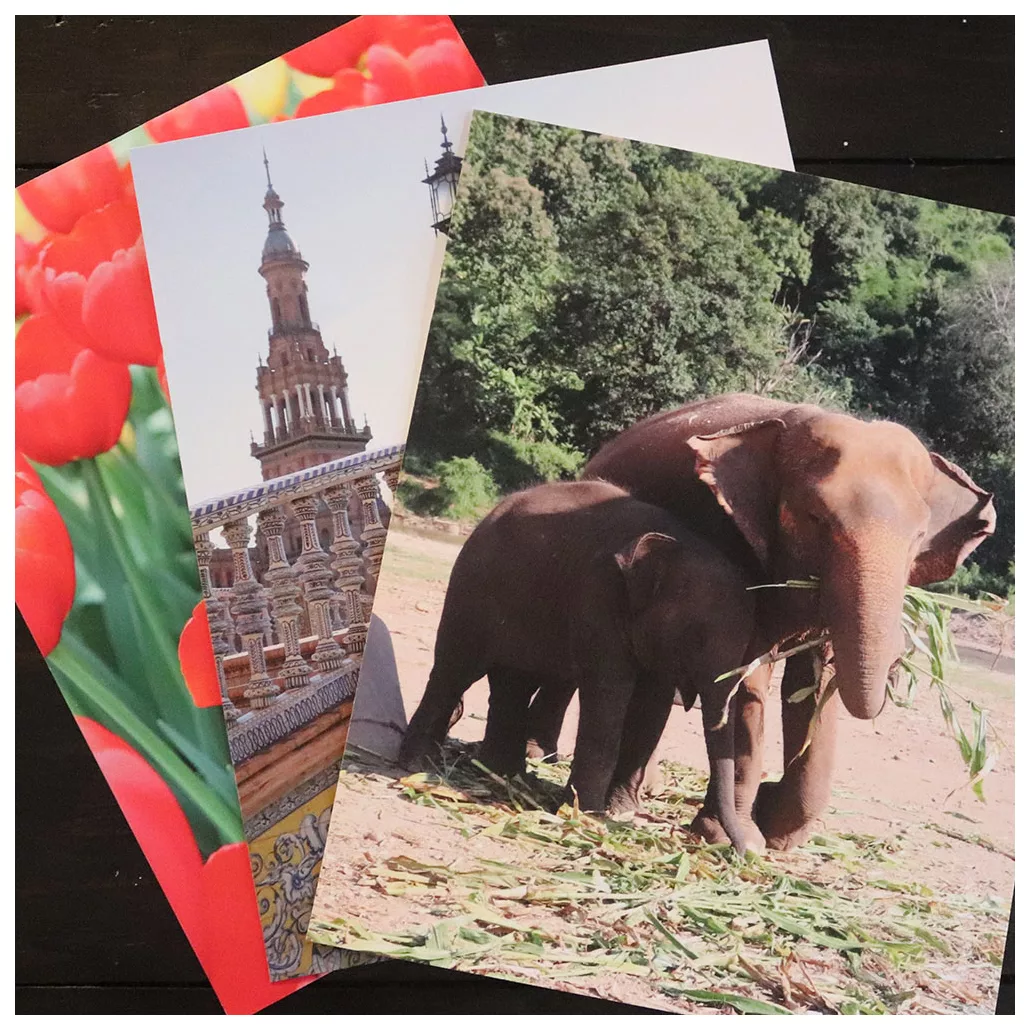Visiting Gudvangen Viking Village on the Norwegian Fjords
Last updated on April 9, 2025
Since I’m into history, the Gudvangen Viking Village was a place I wanted to visit to learn more about the Vikings. I find that open-air museums like this one are great for experiencing what life was like in a different time, rather than simply reading about it or seeing artefacts. If you want to go to the Gudvangen Viking Village, here’s what to expect and what I thought of it.
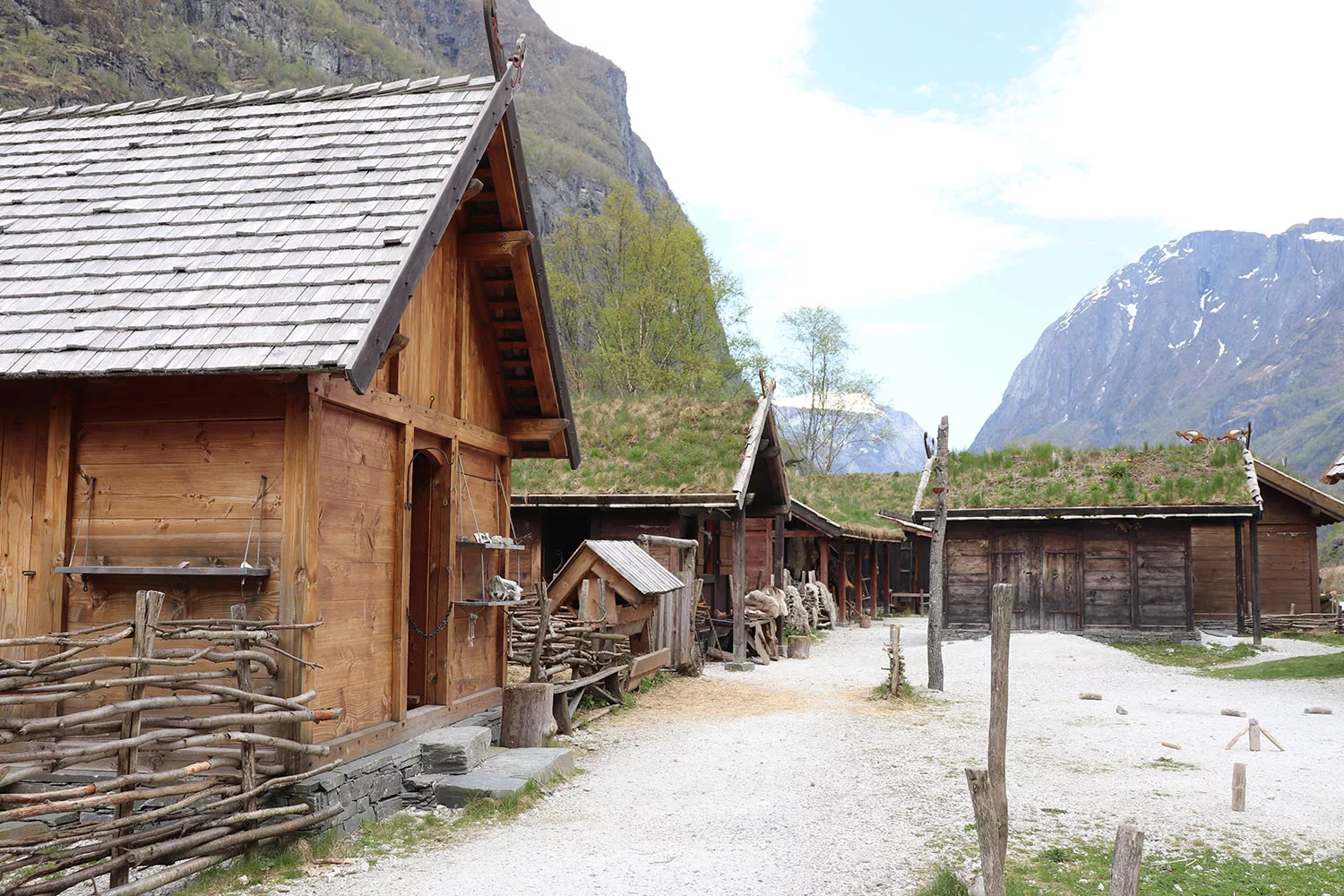
Called “Viking Valley,” the Viking village is actually named Njardarheimr, meaning “the home dedicated to the Norse god Njord.” It opened in 2017 on the site of what was a summer market during the Viking ages and was built using Viking era construction practices. It’s not just for aesthetics or to catch tourists, but is based on the historical record, archaeological findings and research. They try to make it as historically accurate as possible.
As a hobbyist historian of the middle ages, that era is extremely misunderstood and misrepresented. I found through my research of Vikings particularly are very misunderstood and misrepresented. So I think a visit to the Gudvangen Viking Village, while it’s fun, is also a great way to learn about the actual Vikings and who they were.
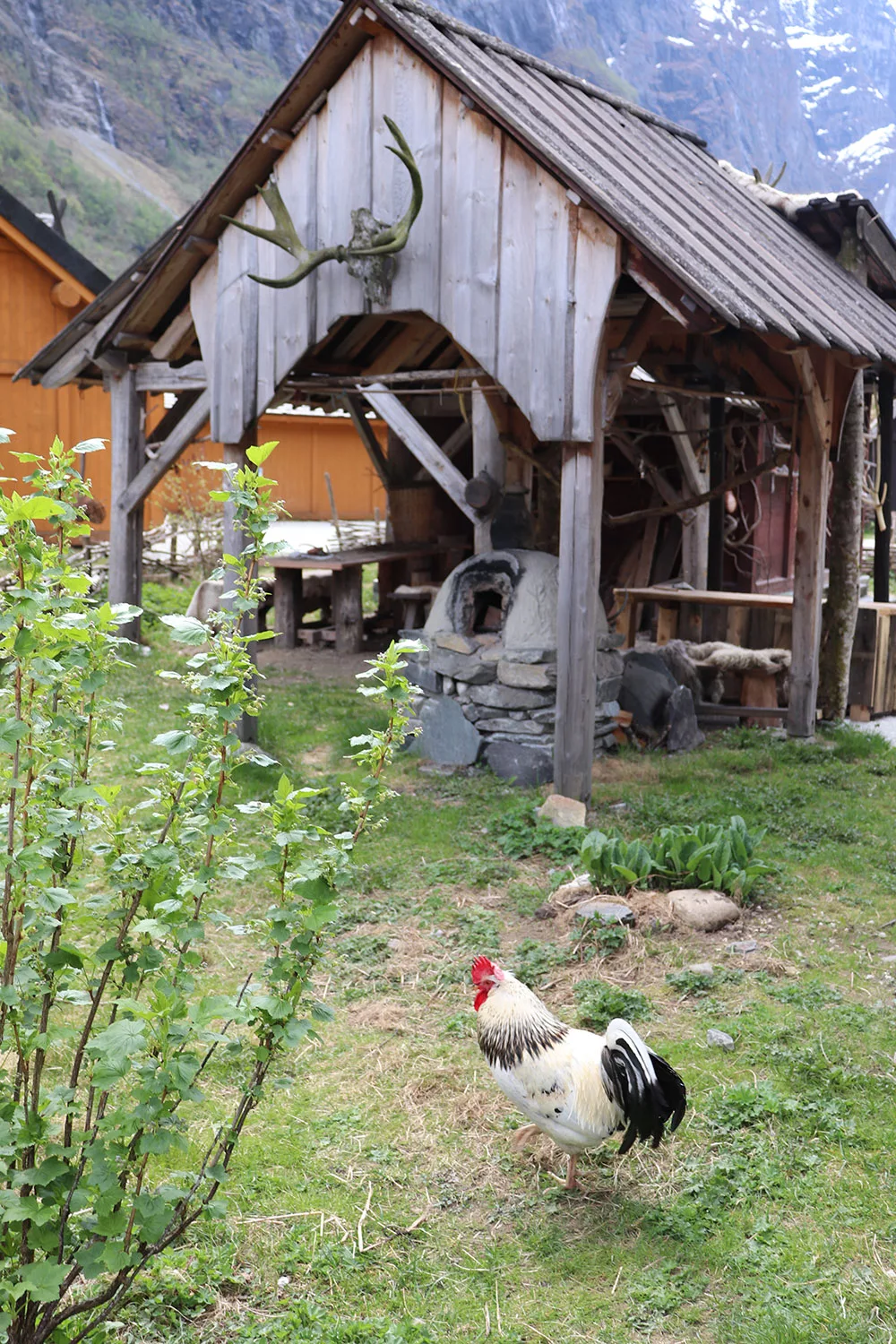
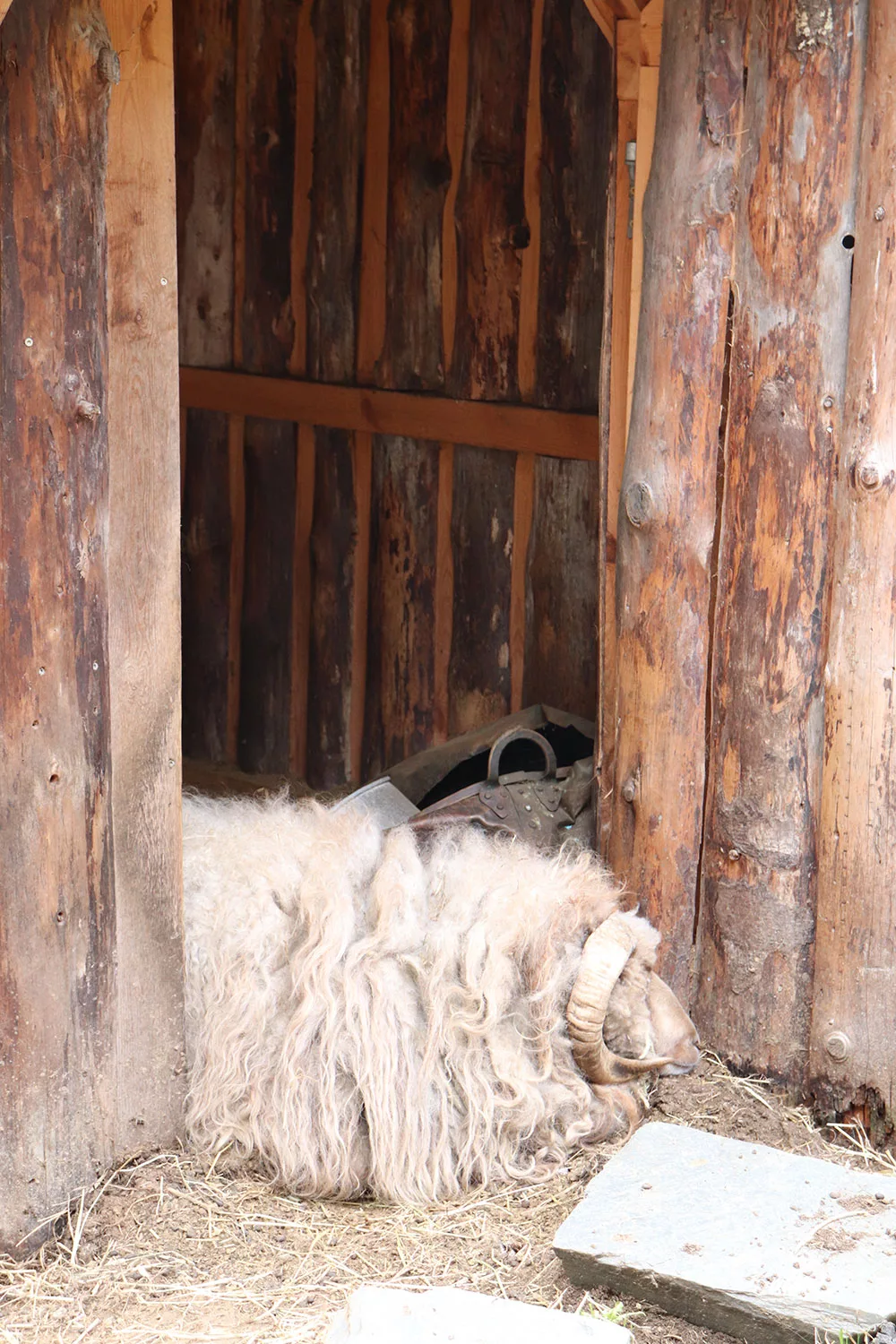
There are a bunch of different things to see within the Gudvangen Viking Village. There are a few different places for the animals, like chickens and sheep, to roam. Even the animals are chosen based off what actual Vikings would’ve had. There are several buildings that are designed as Viking era homes, and you can peek inside to see the furnishings and decorations.
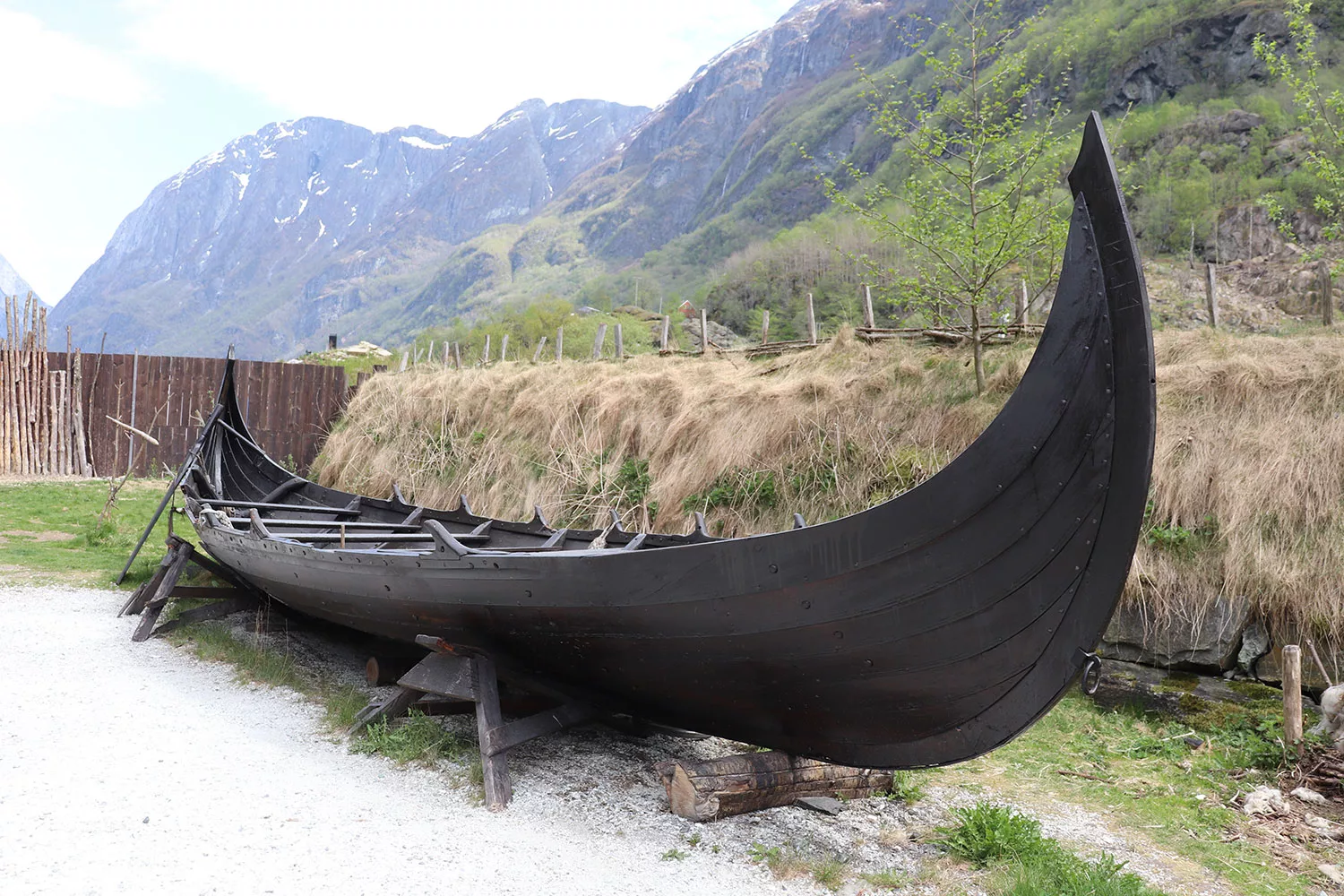

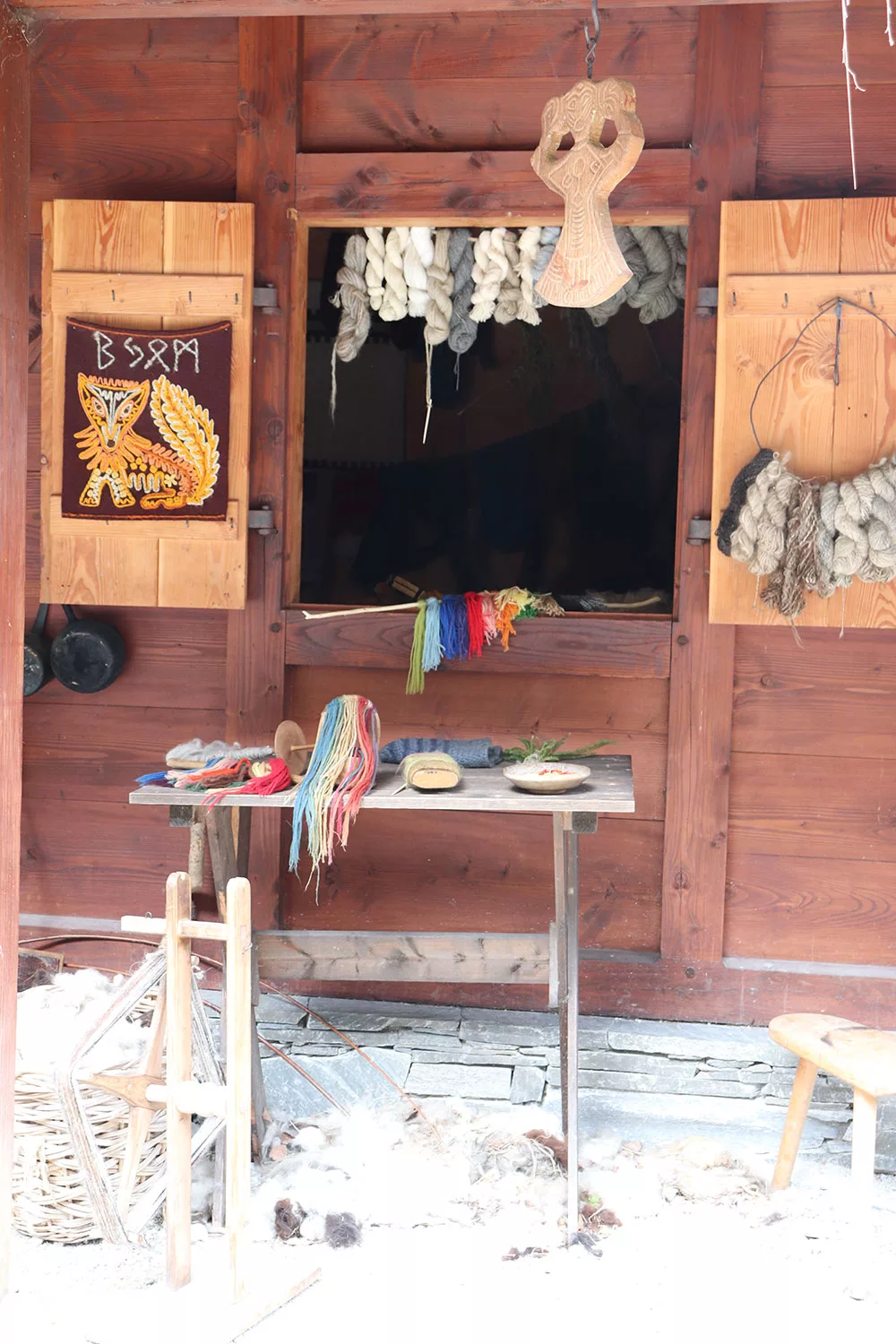

There are public areas with fire pits and wooden statues dedicated to the Norse Pagan gods. There’s a boat built in the Viking style and what would have been a fabric shop, where you can see demonstrations of how wool was turned into cloth and colored.
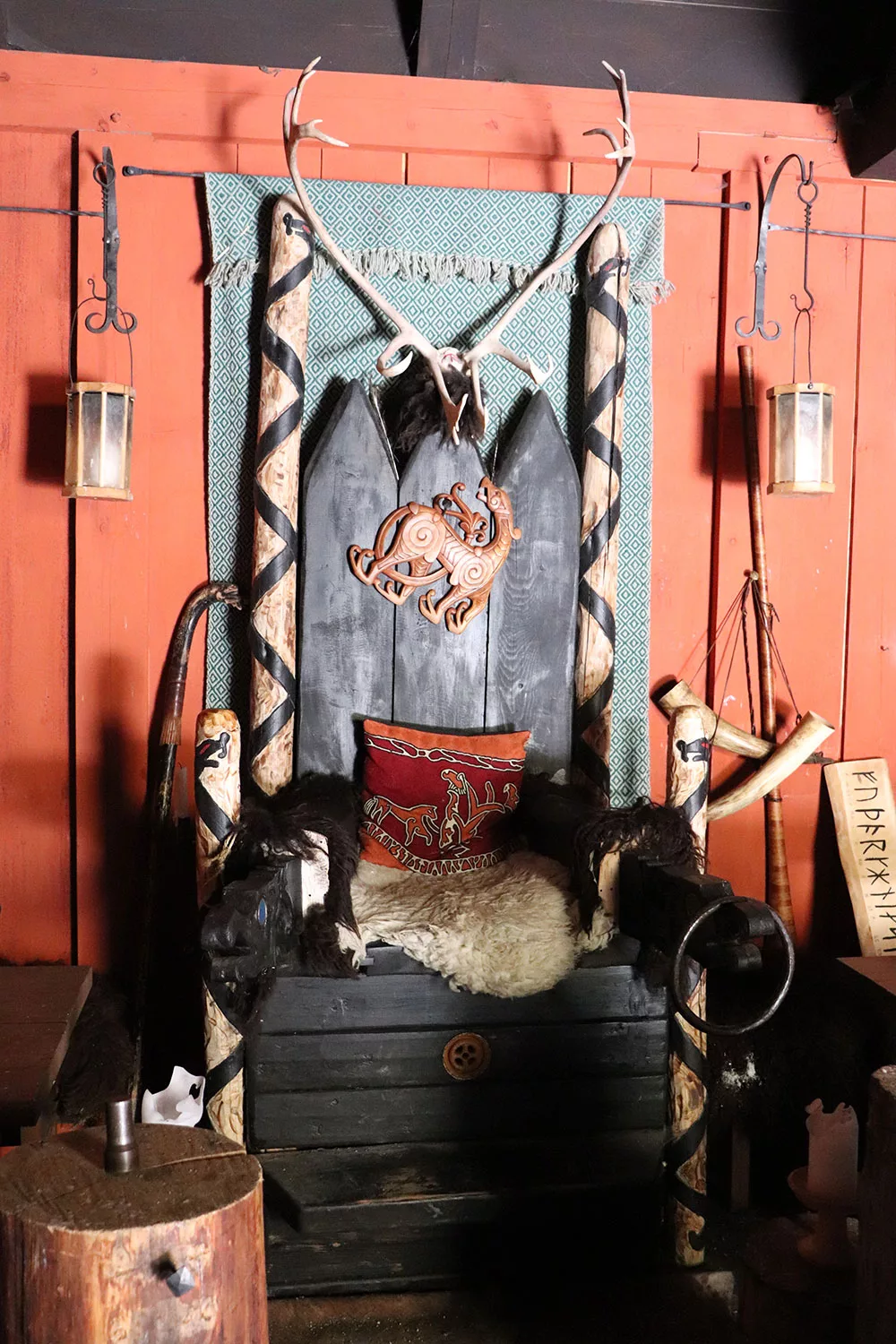
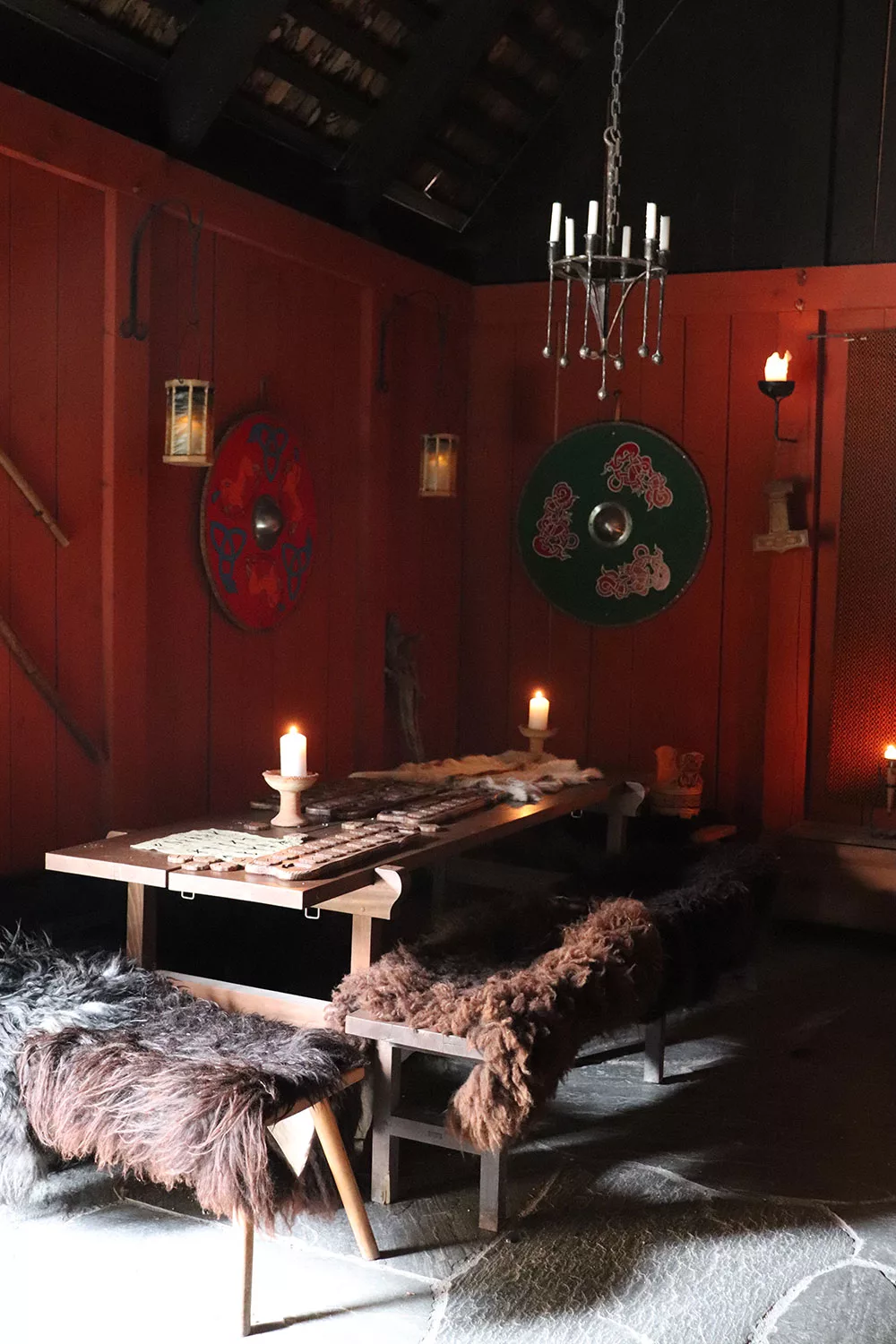
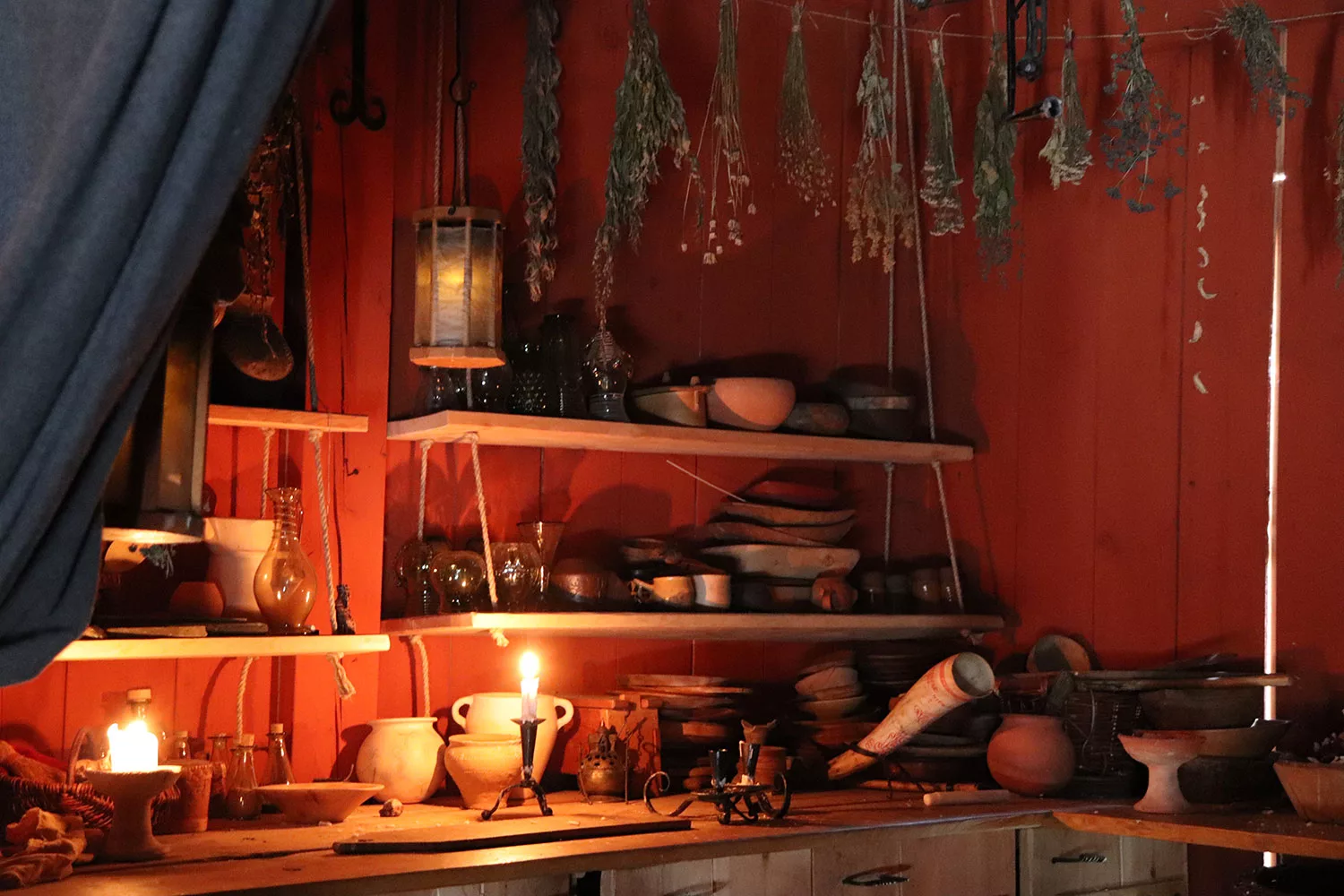
My favorite building was the Viking Hall which is in the center but a lot of people didn’t enter because it was dark inside. There are actual candles burning but it does take the eyes about a minute to adjust to the dark once you enter (they didn’t seem to be too big on windows back then – *insert dark ages joke here*). But inside the hall, you can see recreations of Viking era games, including a chess or chess-predecessor game, which I found to be really cool. They also have a setup of herbs for what looked like medicine or food, and some carvings to Norse Pagan deities.
This building is one of the only ones you can go into and walk around, and it’s also heavily decorated in the Viking style. I thought it was cool to see what that would’ve looked like because it was very different from what I was expecting and what’s portrayed in the media. As I mentioned, I really like places like this because it’s about the experience rather than just reading about what something – like a main hall – would’ve been like.
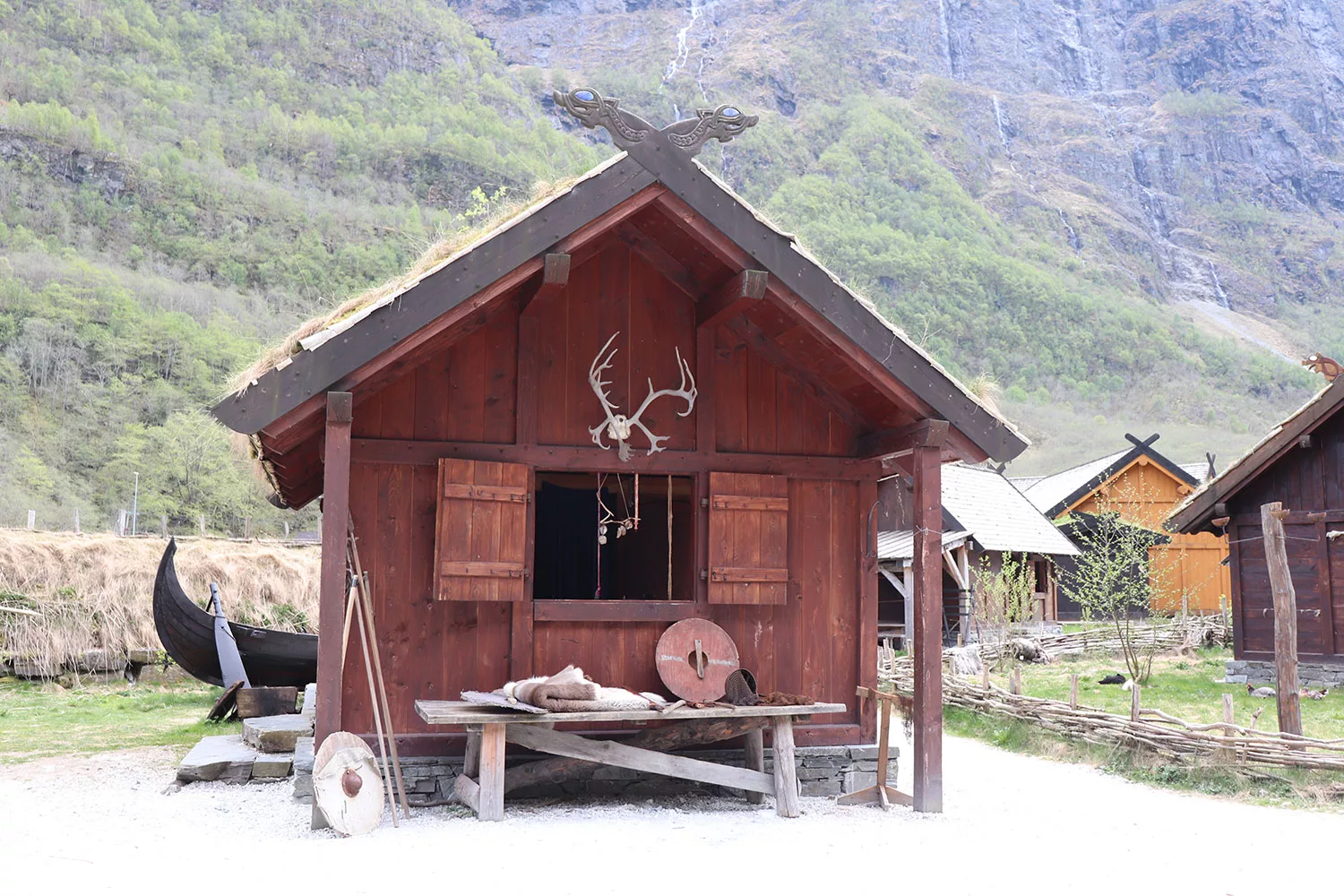
I usually like plaques to tell me what I’m looking at or to give me tidbits of history, but I did really like that the Gudvangen Viking Village was designed to be that – a village – rather than just an open-air museum. There were a few people walking around with authentic garb that are able to tell you about the different things you’re seeing and about the local history – historical interpreters. When I visited in May, there were about 2 or 3 of these people, and I’m not sure if that’s about standard for the Gudvangen Viking Village or if there would be more people during the summertime.
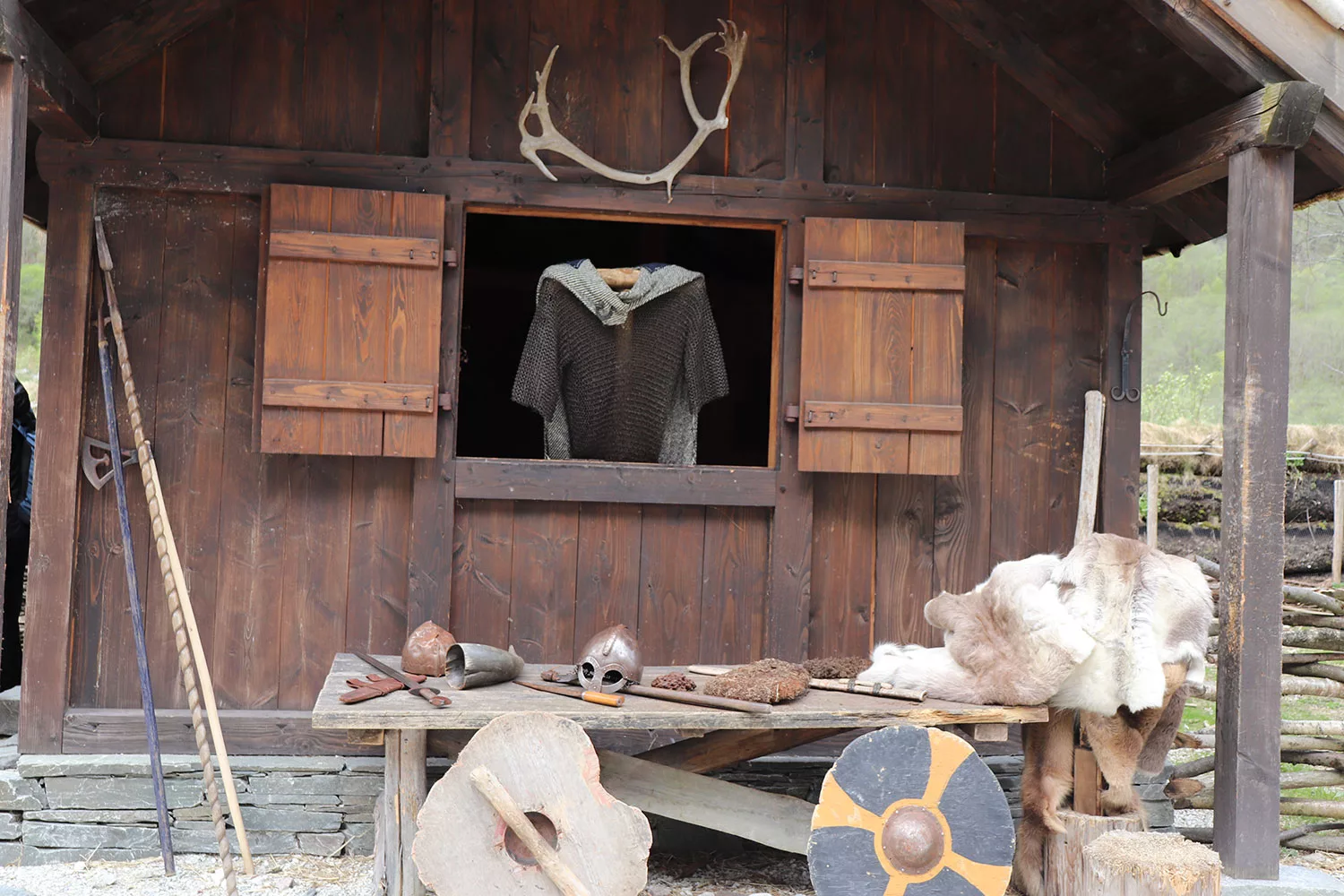
Also included in your ticket to the Gudvangen Viking Village is an optional guided tour which takes about 40 minutes. It’s given by the historical interpreters who will tell you about different aspects of the Viking lifestyle and the era in general. Since we’re in a recreated village it’s a lot easier to see exactly what they talk about and examples are readily on hand. Some different things we learned about on our tour included transportation (boats), clothing, warfare and religion. It’s very educational and entertaining so I highly recommend taking the tour.
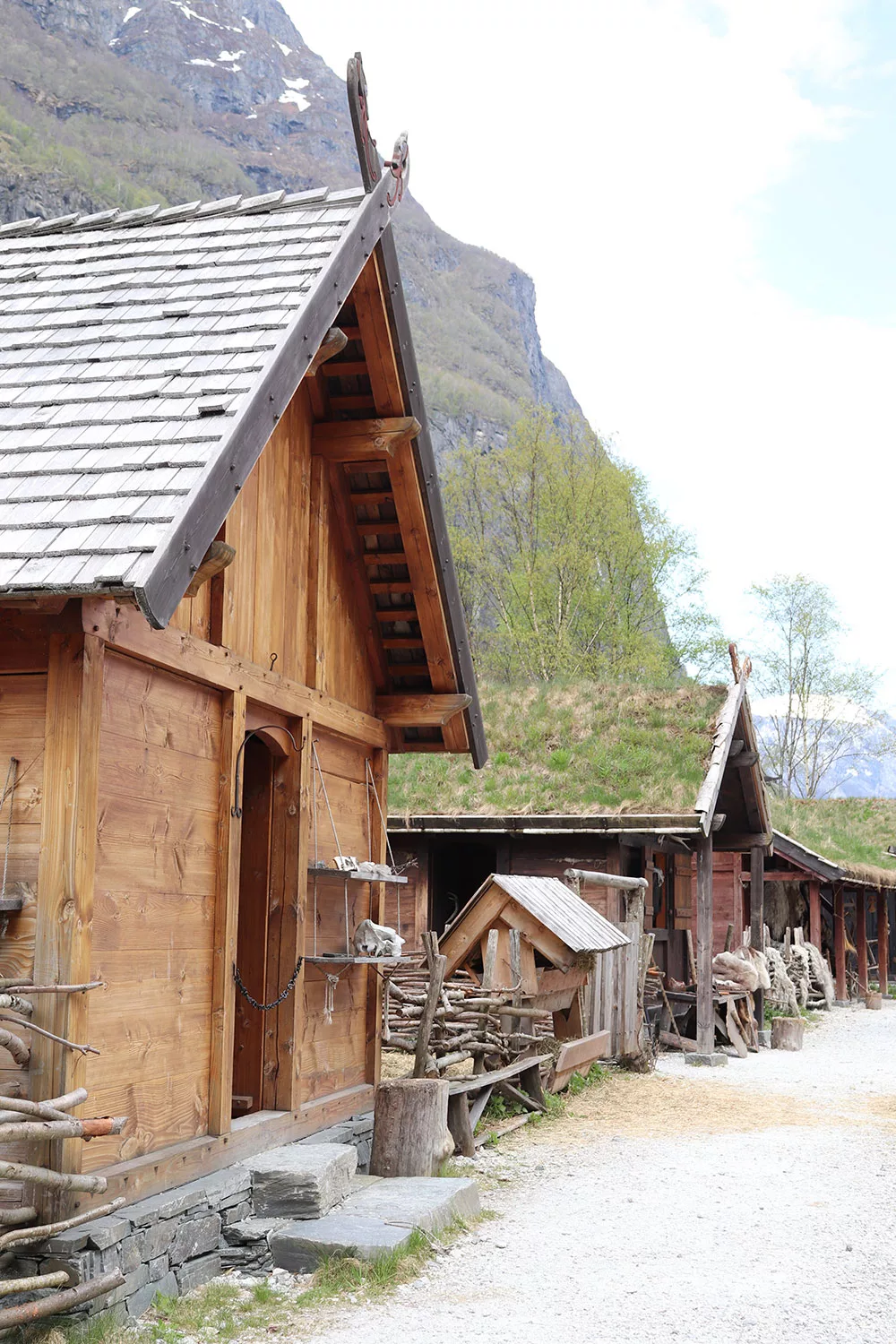
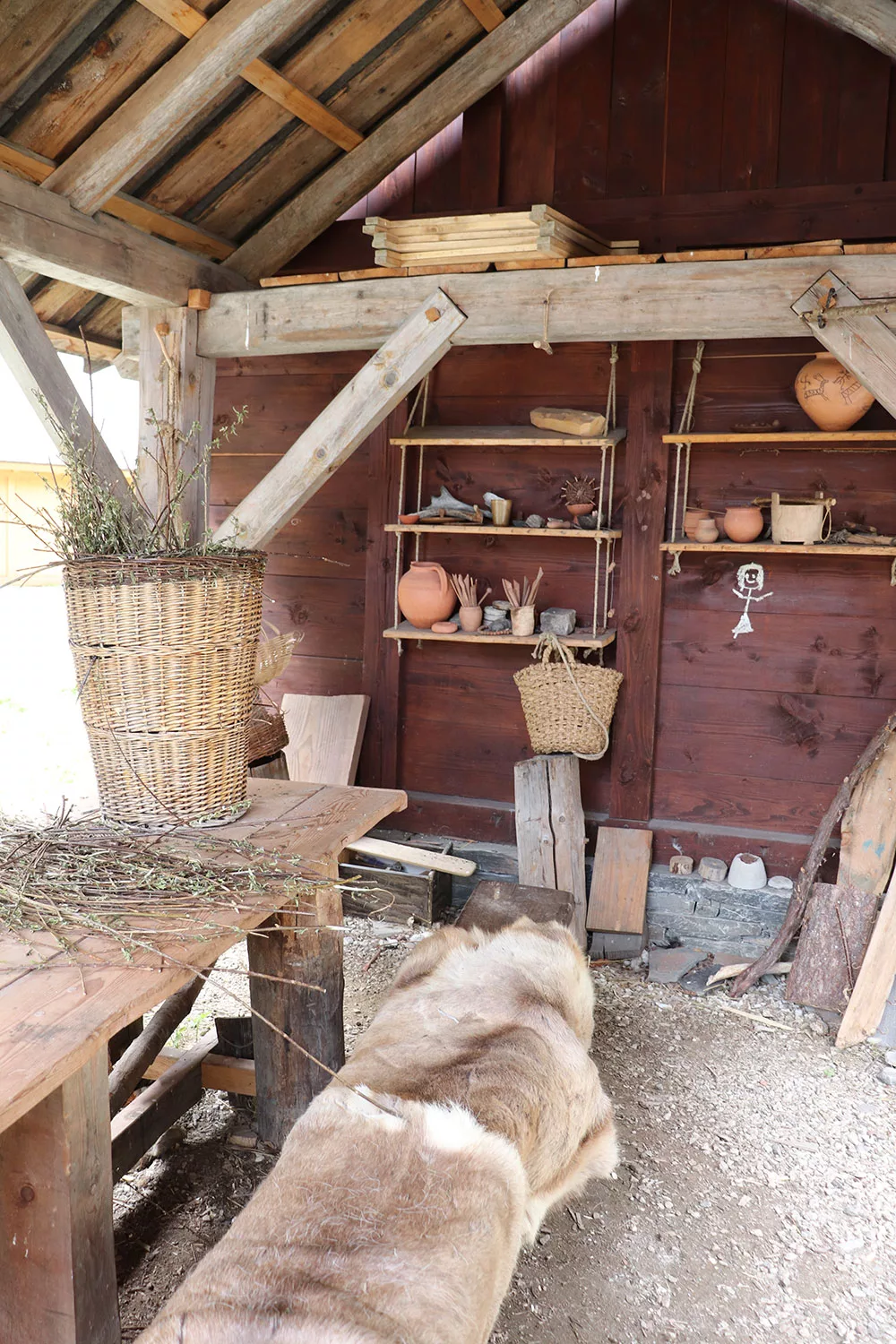
There are also some activities that you can do for free. They have archery (a favorite of mine), axe throwing (something I avoid like the plague), and even person to person combat. I did not feel like having a sword fight with a muscular man but it is an option for something to do. The Gudvangen Viking Village definitely put a lot in to make it enjoyable and interactive.
Right now, the village is a bit smaller than I anticipated (though it’s not exactly small). They opened in 2017 but have continued to build over the years. They have a large part of fenced-in land that doesn’t have much on it and I wonder if future buildings are going to be there. Your visit to the Gudvangen Viking Village helps them finance future projects, which is another bonus of visiting. I’d like to go back in a few years to see how they’ve grown and what different projects they’ve added.
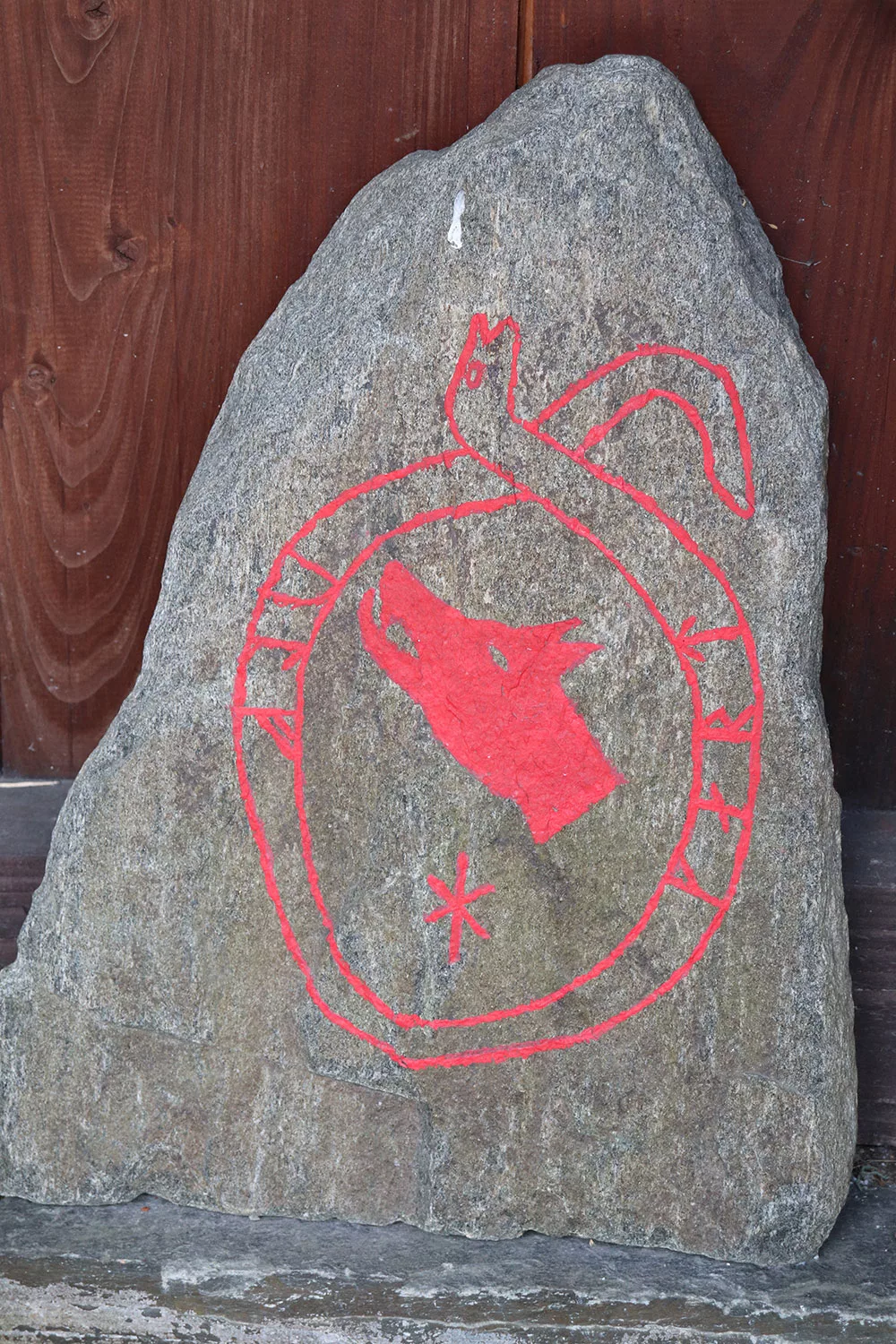
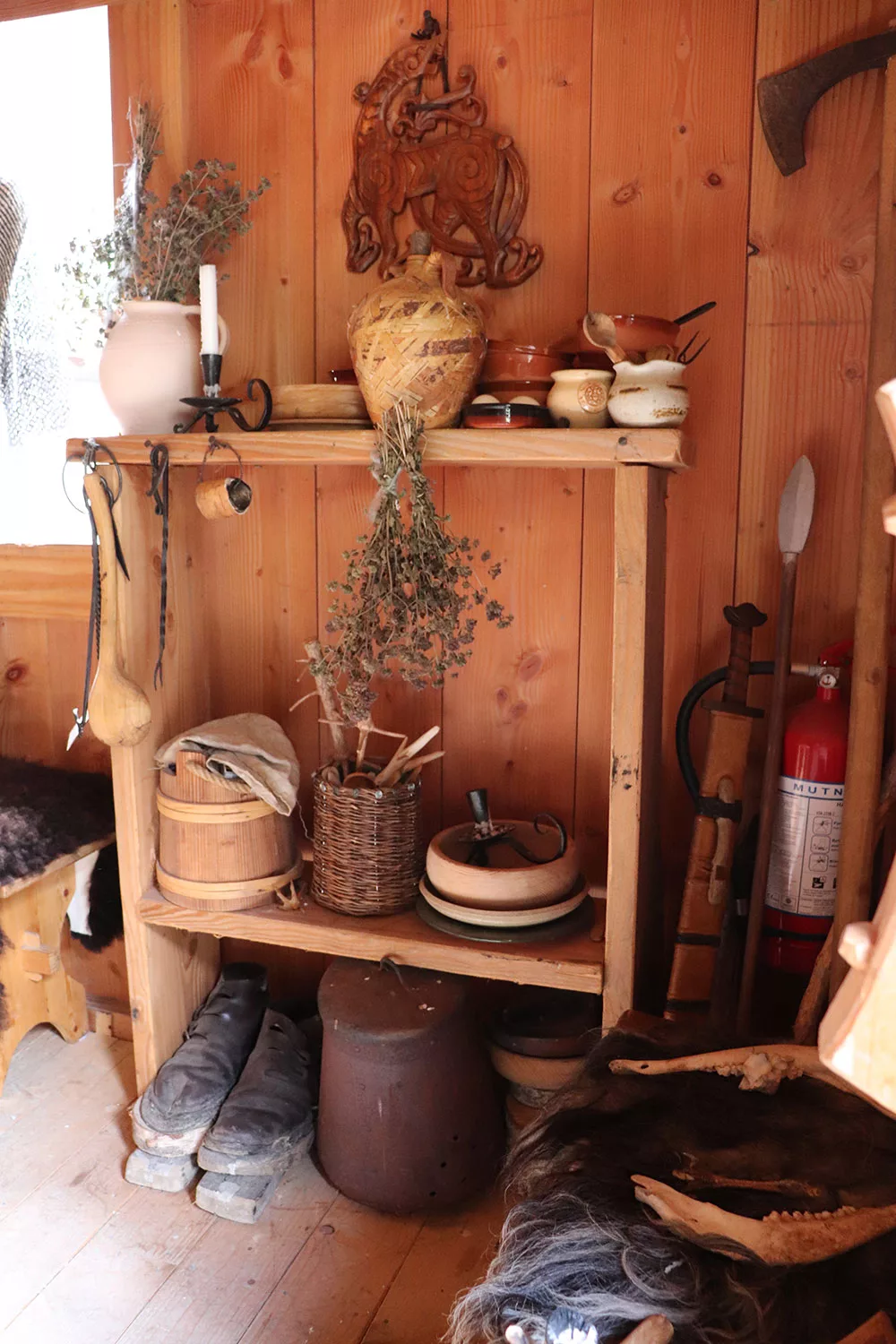
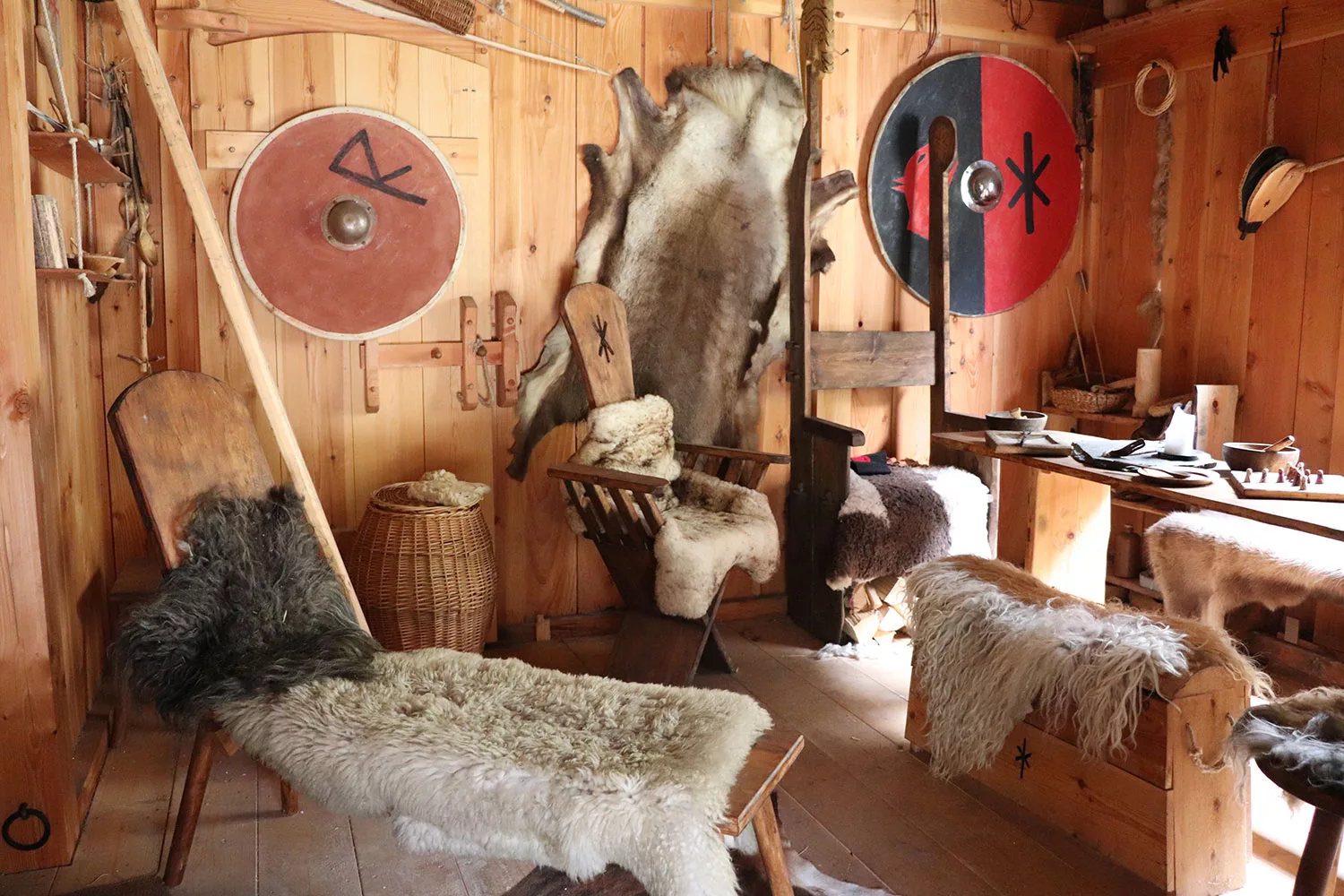
If you can’t tell, I highly recommend a trip to Gudvangen Viking Village. It’s a cool and unique place to learn about history in one of Norway’s most beautiful areas (which I write more on below…)
Entering the Viking Village
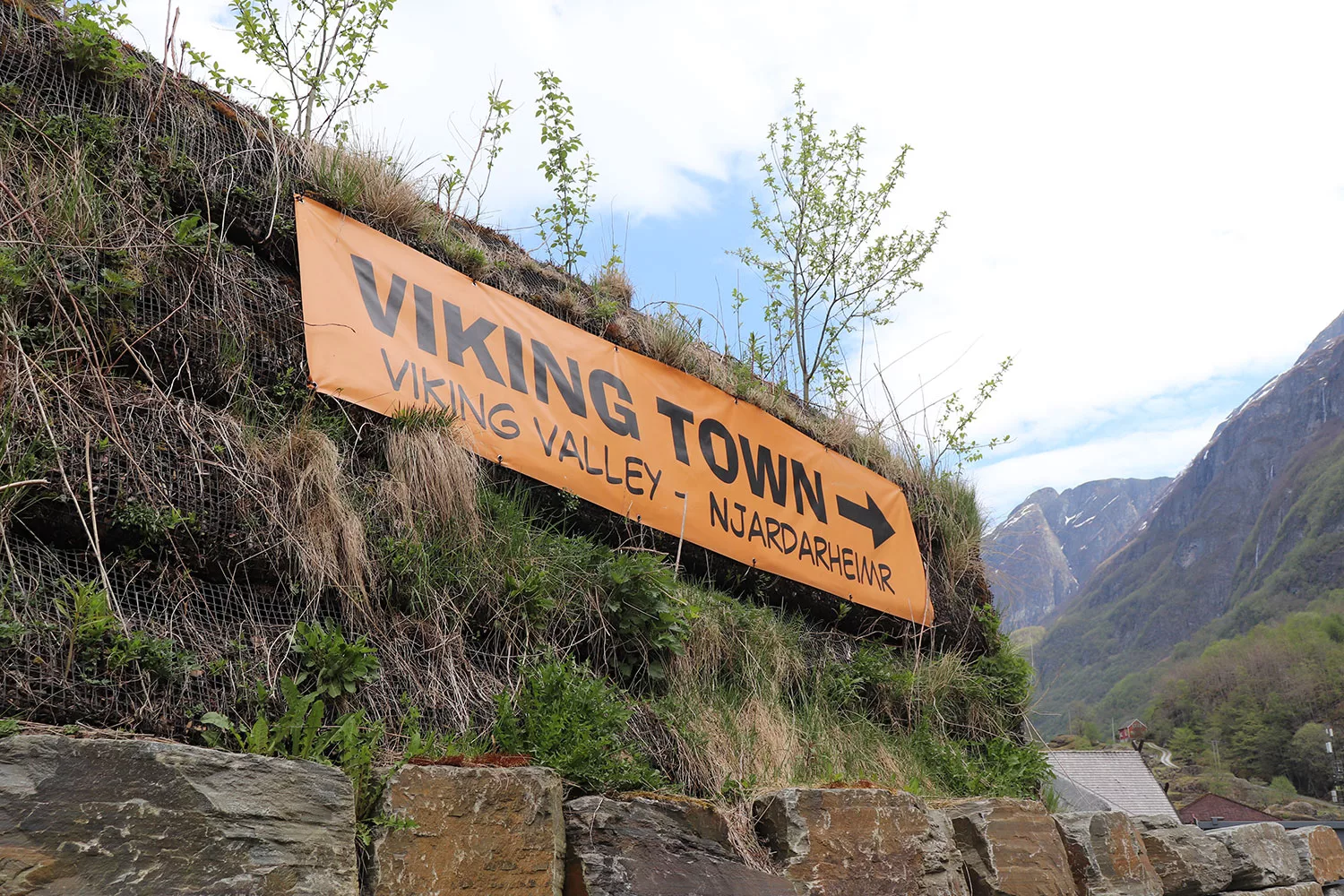
This is so silly, but I walked around and around trying to find the entrance. It’s not clearly marked (at least, I didn’t think so) but you need to go in the building called the cafe & gift shop to enter the Viking village. Even if you bought your ticket online, you’ll go to the gift shop to get a stamp that permits you entry to the village.
Food at Gudvangen Viking Village
They have a cafe with modern food, which costs around 200-300 NOK per meal. They do have a veggie burger but that was the only vegetarian option at the time I visited. There is a gas station next door, but the area is quite remote so if the cafe won’t cut it for you, you may want to bring your own food or plan on eating elsewhere.
Gudvangen

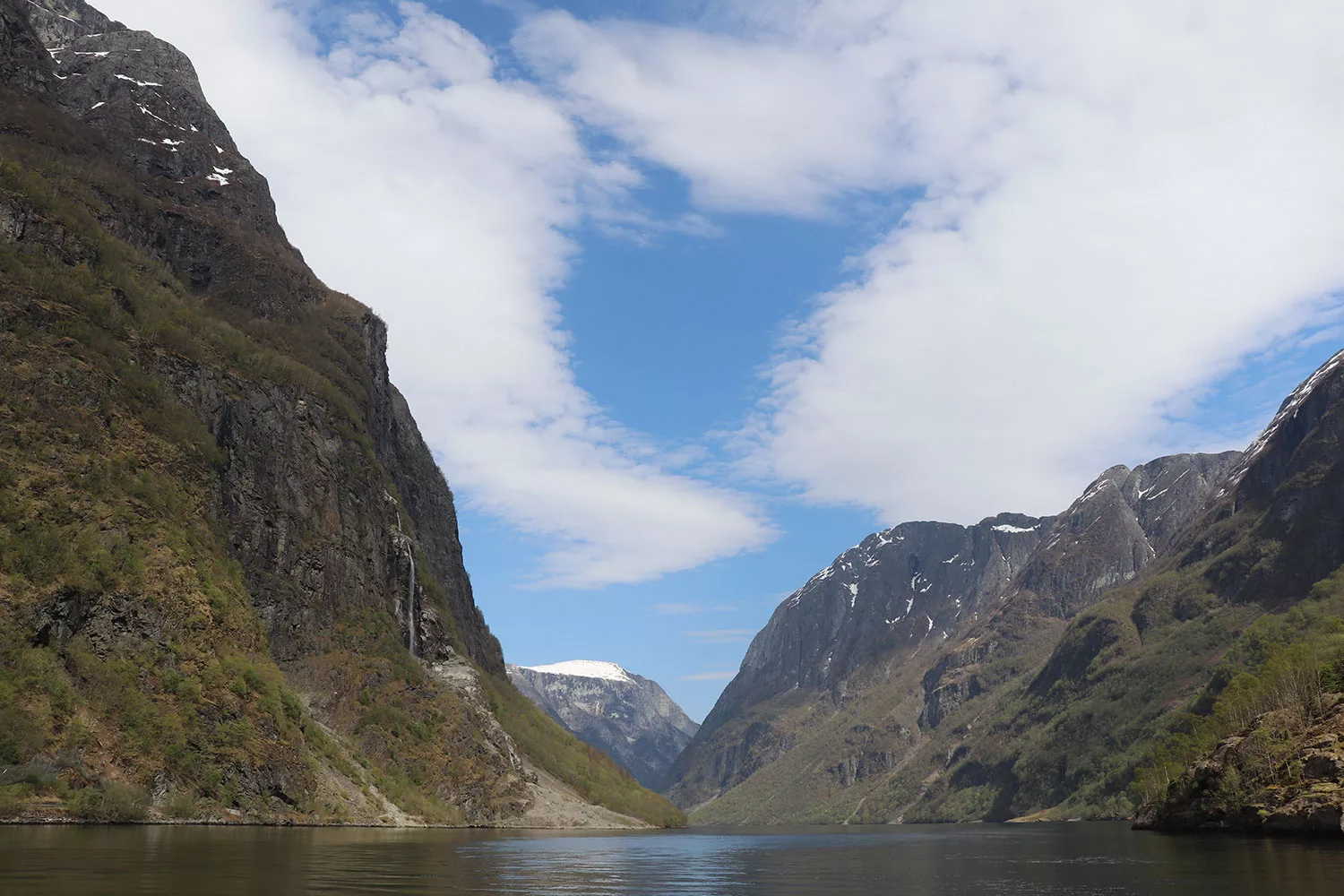
Gudvangen is located at a tail end of the Sognefjord, which is absolutely one of the most beautiful places I got to visit in Norway. The beautiful waters against sky-scraping mountains is just stunning. My camera couldn’t even capture the true spectacle of it.
When I visited, I noticed that Nordic Ventures was open and offering kayak rentals! Unfortunately I missed the tour and the downside to solo travel is that you can’t do things like kayak on your own. If you go during the spring to autumn months, a kayak tour is definitely something to consider. I was so upset I didn’t know about it, otherwise I would’ve organised both a kayak tour and the Viking village.
There are also some World War II bunkers nearby but I wasn’t sure how to get to them. It’s on top of a tunnel but the incline looked very steep and rocky, so I didn’t even attempt to make the journey. You can see them on a lot of maps, and surely there must be a way to get there – but it may be more difficult than just taking a path up.
If you can, I recommend combining your visit to Gudvangen Viking Village with one to Borgund Stave Church. They are about an hour’s drive apart and during the longer days, it is quite possible to visit both (the Stave Church needs only about an hour to visit). I thought it would be too busy to visit both on the same day, so I did different days, and then I felt that I indeed could’ve combined them and gotten an extra day to do something else. Live and learn!

I can’t recommend a stop to Gudvangen Viking Village enough. It’s a fun and historical place to see, and it’s in one of Norway’s most beautiful areas. A visit to Norway is not complete without the western fjords. Again, I recommend making a whole day out of Gudvangen and/or the fjords if you do go. And I hope you have a great time!
Book an Organised Tour
Book Your Stay
Need a Book on Vikings?
I’m happy to partner with Bookshop.org to promote sales from independent booksellers.
About the Author
My name's Lilly and I'm a Baltimore-based travel blogger with a focus on art and history. I work full time and manage to get in several trips a year. Learn more about me.Tags: europe, gudvangen, norway












